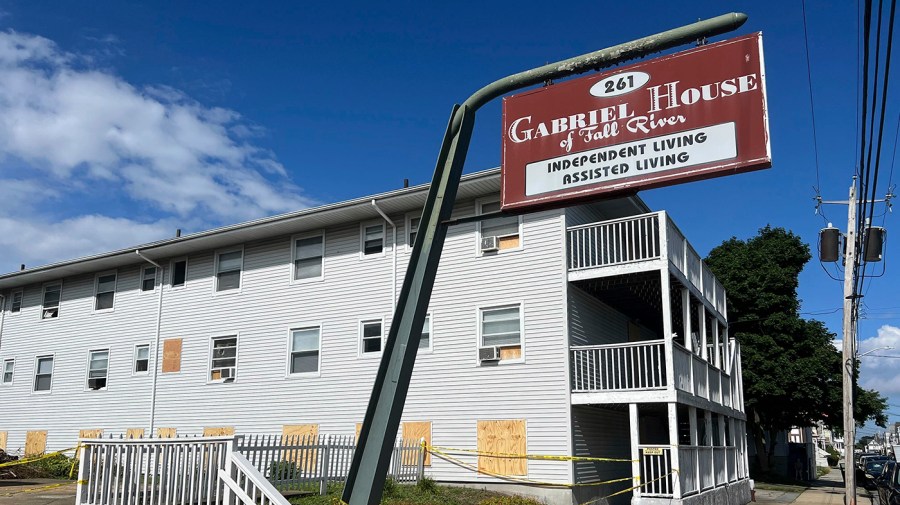Health
Fatal Fire at Massachusetts Assisted Living Home Sparks Legislative Urgency

A tragic fire at an assisted living home in Fall River, Massachusetts, on October 15, 2023, has reignited calls for stronger federal legislation to regulate these facilities. The incident, which resulted in multiple fatalities, has drawn attention to the current lack of comprehensive federal oversight that governs assisted living homes, contrasting with the more stringent regulations applied to skilled nursing facilities.
Currently, while federal regulations exist for skilled nursing homes, the standards for safety, staffing, and quality at assisted living facilities are determined by individual states. This discrepancy has raised concerns among long-term care resident advocates who argue that the absence of uniform federal guidelines compromises the safety and well-being of vulnerable populations residing in these facilities.
Advocates emphasize that the guidelines governing assisted living homes are inadequate. They point to the need for improved oversight to ensure that these facilities meet essential safety standards. The recent fire has underscored the potential dangers faced by residents when such oversight is lacking.
The Massachusetts Department of Public Health has stated that it will conduct a thorough investigation into the fire and assess the compliance of the facility with existing safety regulations. However, the advocates argue that state-level regulations alone are insufficient to protect residents. According to Mary Smith, a representative from the National Association of Long-Term Care Residents, “The time has come for federal action to ensure that all assisted living facilities are held to the same high standards of safety and care.”
With this incident serving as a catalyst, advocates are now urging lawmakers to consider new legislation that would establish binding federal standards for assisted living facilities. They believe that such measures could prevent future tragedies and enhance the quality of care provided to residents.
As discussions around potential reforms gain momentum, many in the community are calling for immediate action. The fire has not only raised awareness about the vulnerabilities of residents in assisted living facilities but has also highlighted the need for more robust legislative frameworks that prioritize resident safety and care quality across the board.
In light of this incident, the trajectory for federal legislation may be shifting. The growing pressure from advocates and the public may compel lawmakers to address these critical issues sooner rather than later. The implications of this fire extend beyond Fall River, suggesting a nationwide conversation about the standards that govern assisted living facilities and the protection of those who rely on them for care.
The tragic events of October 15 serve as a reminder that the safety of vulnerable populations must be a priority for policymakers at all levels. As the investigation unfolds, the hope remains that it will lead to meaningful changes that enhance the safety and quality of life for assisted living residents across the country.
-

 Technology5 months ago
Technology5 months agoDiscover the Top 10 Calorie Counting Apps of 2025
-

 Technology2 weeks ago
Technology2 weeks agoOpenAI to Implement Age Verification for ChatGPT by December 2025
-

 Health3 months ago
Health3 months agoBella Hadid Shares Health Update After Treatment for Lyme Disease
-

 Health3 months ago
Health3 months agoAnalysts Project Stronger Growth for Apple’s iPhone 17 Lineup
-

 Health3 months ago
Health3 months agoErin Bates Shares Recovery Update Following Sepsis Complications
-

 Technology5 months ago
Technology5 months agoDiscover How to Reverse Image Search Using ChatGPT Effortlessly
-

 Technology3 months ago
Technology3 months agoElectric Moto Influencer Surronster Arrested in Tijuana
-

 Technology2 months ago
Technology2 months agoDiscover 2025’s Top GPUs for Exceptional 4K Gaming Performance
-

 Technology5 months ago
Technology5 months agoMeta Initiates $60B AI Data Center Expansion, Starting in Ohio
-

 Technology5 months ago
Technology5 months agoRecovering a Suspended TikTok Account: A Step-by-Step Guide
-

 Health5 months ago
Health5 months agoTested: Rab Firewall Mountain Jacket Survives Harsh Conditions
-

 Lifestyle5 months ago
Lifestyle5 months agoBelton Family Reunites After Daughter Survives Hill Country Floods





















